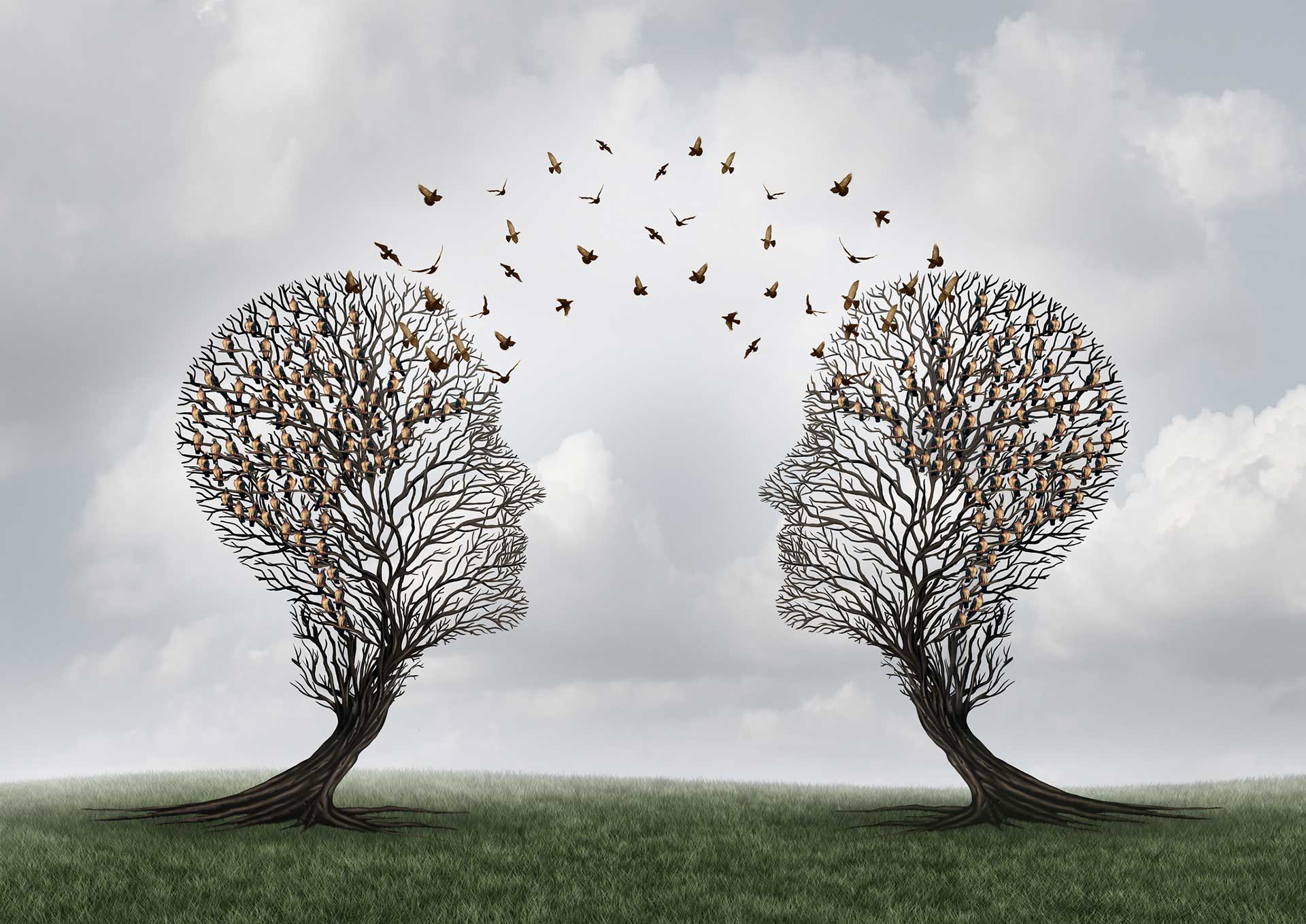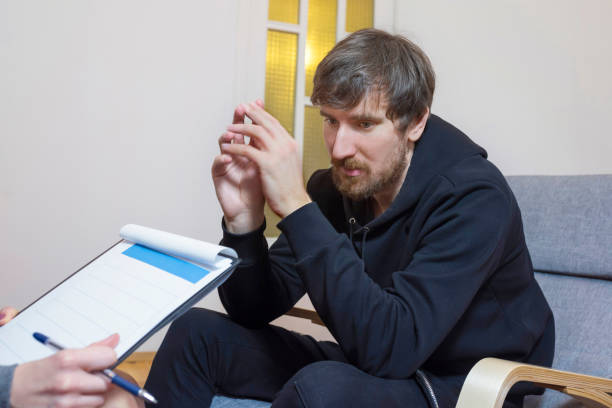At LATN, our dedicated team of therapists offers a diverse array of specialized services tailored to meet your unique needs. From cutting-edge modalities like EMDR and Ketamine Assisted Psychotherapy to established methods such as The Gottman Method for Couples and Gestalt Therapy, we provide a comprehensive range of therapeutic services. From trauma recovery and relationship issues to existential concerns and personal growth, and everything in between, our therapists are trained in an extensive range of services including Sandplay Therapy, Sensorimotor Psychotherapy, TF-CBT, Child-Parent Psychotherapy, Exposure Therapy, DBT, and beyond.

EMDR
EMDR, or Eye Movement Desensitization and Reprocessing, is a psychotherapy approach designed to alleviate distress associated with traumatic memories. It involves bilateral stimulation, such as eye movements or tapping, while focusing on traumatic experiences to facilitate processing and resolution.
Who Benefits: EMDR benefits individuals with trauma-related conditions like PTSD, anxiety disorders, depression, and phobias, helping them process traumatic memories and reduce associated distress.
What To Expect: In EMDR sessions, individuals recall distressing memories while engaging in bilateral stimulation, guided by the therapist. This process helps desensitize and reprocess traumatic experiences, leading to symptom reduction and emotional healing.
How It Works: EMDR works by facilitating the brain’s natural ability to process traumatic memories, enabling individuals to integrate distressing experiences into their memory networks. Bilateral stimulation during the reprocessing phase helps access and reprocess traumatic memories, leading to symptom relief and psychological resolution.

Sandplay Therapy
Sandplay therapy uses sand, figures, and symbols to express thoughts and feelings nonverbally. Individuals create scenes in sand trays, using figures to represent their inner or outer experiences.
Who Benefits: Sandplay therapy suits all ages, especially those grappling with verbal expression or conventional therapy challenges.
What to Expect: Use sand and figures to create reflective scenes, with therapist support for nonverbal exploration.
How Sandplay Works: Creative expression accesses and communicates unconscious thoughts and feelings, aiding insight and emotional healing.

Sensorimotor Psychotherapy
Sensorimotor therapy integrates mind-body connections, particularly in trauma treatment. It prioritizes exploring physical sensations, movements, and bodily responses to past traumatic experiences as crucial aspects of the therapeutic journey toward healing.
Who Benefits: Sensorimotor therapy supports trauma survivors, aiding those with PTSD, complex trauma, anxiety, depression, and chronic pain linked to trauma.
What to Expect: Sessions involve exploring bodily sensations and responses to trauma using techniques like mindfulness and movement exercises.
How It Works: By addressing trauma stored in the body’s somatic memory, sensorimotor therapy promotes emotional regulation and healthier coping strategies.

Transpersonal Therapy
Transpersonal therapy blends spiritual, mystical, and transcendent dimensions into psychotherapy. It delves into the interconnectedness of mind, body, and spirit, prioritizing personal growth, self-awareness, and transformational journeys.
Who Benefits: Transpersonal therapy aids those seeking deeper meaning and connection, especially during spiritual or existential crises, or when feeling disconnected or unfulfilled. It’s valuable for exploring altered states of consciousness and existential questions.
What to Expect: Sessions involve exploring dreams, symbols, myths, and spiritual practices in a supportive atmosphere. Techniques like meditation and expressive arts may be used.
How It Works: Transpersonal therapy facilitates transcending the ego and embracing deeper aspects of the self, leading to profound personal transformation and spiritual awakening.

Psychosynthesis
Psychosynthesis is a holistic therapy integrating physical, emotional, mental, and spiritual dimensions to nurture personal growth and self-awareness.
Who Benefits: Psychosynthesis therapy caters to diverse needs, aiding individuals in self-understanding, growth, and overcoming challenges like anxiety, depression, and identity crises.
What to Expect: Collaborative sessions blend talk therapy, reflective exercises, and visualization in a supportive environment, helping individuals explore their inner world and work towards personal goals.
How It Works: Psychosynthesis integrates personality aspects, fostering self-reflection and alignment with higher purpose or spiritual aspirations for greater harmony and self-realization.

Ketamine Assisted Psychotherapy (KAP)
KAP is a holistic, psychedelic-assisted modality that pairs ketamine treatment with dedicated psychotherapy sessions for deeper therapy, more frequent breakthroughs, and better clinical outcomes. For more information on ketamine and its benefits visit: journeyclinical.com.
Who Benefits: Ketamine-assisted therapy aids treatment-resistant depression, anxiety, PTSD, and chronic pain, offering rapid relief and addiction support.
What To Expect: Step 1: Medical Evaluation – Assess eligibility and create personalized plans. Step 2: Psychotherapy Sessions – Engage in preparation, dosing, and integration sessions. Step 3: Ongoing Monitoring – Regular follow-ups tailor treatment plans.
How It Works: Ketamine induces trance states, helping patients explore emotions in therapy. Discussions with providers address challenges post-session, guiding further treatment.

Developmental Needs Meeting Strategy
Developmental Needs Meeting Strategy (DNMS) is a therapeutic approach integrating EMDR, ego-state therapy, and attachment theory to address childhood-based psychological issues by meeting unmet developmental needs and promoting healing and integration.
Who Benefits: DNMS helps individuals with childhood trauma, neglect, or attachment issues, as well as anxiety, depression, low self-esteem, and relationship challenges, fostering healing, coping skills, and self-awareness.
What To Expect: In sessions, a trained therapist guides individuals through addressing unmet developmental needs, integrating inner child parts and protective ego states using visualization and bilateral stimulation.
How It Works: DNMS provides a safe space for exploring and processing childhood experiences, nurturing inner child parts for healing and personality integration, promoting resilience and well-being.

The Gottman Method for Couples
The Gottman Method is a research-based approach by Drs. John and Julie Gottman, aiming to help couples build and sustain healthy relationships through strengthening friendship, managing conflict constructively, and creating shared meaning.
Who Benefits: The Gottman Method supports couples facing communication challenges, conflict, or seeking deeper connection, offering practical skills to enhance relationship satisfaction and resilience.
What To Expect: Sessions involve structured exercises and discussions led by a trained therapist, focusing on identifying strengths, improving communication, and deepening emotional intimacy using techniques like observation and active listening.
How It Works: The Gottman Method equips couples with research-based tools to strengthen their foundation and navigate challenges, fostering trust, understanding, and mutual respect for a more satisfying and enduring relationship.

Mindfulness Therapy
Mindfulness therapy utilizes mindfulness practices to alleviate emotional distress, enhance self-awareness, and promote well-being through present-moment awareness, nonjudgmental acceptance, and self-compassion.
Who Benefits: Mindfulness therapy supports individuals with mental health challenges like anxiety, depression, trauma, chronic pain, and stress-related disorders, while also aiding personal growth and resilience.
What To Expect: Sessions involve learning mindfulness techniques to develop awareness of thoughts, emotions, and sensations, with guidance on integrating mindfulness into daily life for coping with difficulties.
How It Works: Mindfulness therapy fosters present-moment awareness and acceptance, reducing stress reactivity and enhancing emotional regulation and resilience for improved mental health and life satisfaction.

Jungian Therapy
Jungian therapy, rooted in Carl Jung’s analytical psychology, delves into the unconscious mind, archetypes, and individuation for personal growth, self-awareness, and psychological wholeness.
Who Benefits: Jungian therapy suits individuals exploring existential questions, facing identity crises, spiritual dilemmas, or relationship challenges, particularly those interested in dream analysis and uncovering unconscious patterns.
What To Expect: Sessions involve exploratory dialogue, dream analysis, and creative expression in a safe environment to uncover hidden aspects of the self and integrate them into awareness.
How It Works: Jungian therapy facilitates individuation by integrating conscious and unconscious elements, fostering personal growth, resolving conflicts, and achieving psychological wholeness through insight gained from exploring dreams and symbols.

Cognitive Behavioral Therapy
Cognitive Behavioral Therapy (CBT) is an evidence-based approach targeting the connection between thoughts, feelings, and behaviors to change harmful patterns contributing to emotional distress and psychological issues.
Who Benefits: CBT aids individuals with anxiety, depression, phobias, OCD, PTSD, eating disorders, substance use issues, and those seeking improved coping skills and stress management.
What To Expect: In sessions, individuals collaborate with a therapist to challenge negative thoughts, learn coping strategies, and develop adaptive behaviors using techniques like cognitive restructuring and exposure therapy.
How It Works: CBT fosters balanced thinking and behavior by challenging automatic thoughts and distortions, replacing them with helpful perspectives and teaching coping skills to manage emotions and engage in healthier behaviors, leading to symptom reduction and improved functioning.

Emotional Freedom Technique
Emotional Freedom Technique (EFT), or tapping, taps specific body points to manage emotions and thoughts, aiming to balance the body’s energy system and reduce pain.
Who Benefits: EFT therapy aids individuals managing stress, anxiety, depression, trauma, phobias, chronic pain, insomnia, cravings, and seeking personal growth.
What To Expect: In a session, individuals identify an issue, then the therapist guides tapping on specific points while addressing the problem. Affirmations may be used to shift negative emotions, with techniques to overcome resistance.
How It Works: EFT, akin to acupuncture, targets meridian points to rebalance energy flow, relieving symptoms caused by negative emotions. Tapping these points is believed to signal the brain’s stress control center, reducing stress and restoring energy balance.

TAT
TAT, or Tapas Acupressure Technique, is a therapeutic method that combines acupressure and cognitive techniques to address emotional issues and promote well-being.
Who Benefits: TAT aids individuals facing emotional challenges like stress, anxiety, trauma, phobias, and depression.
What To Expect: In a session, individuals explore emotional concerns while performing gentle acupressure on specific body points, guided by the therapist to release emotional blockages.
How It Works: TAT stimulates acupressure points while focusing on thoughts or emotions, clearing energy blockages and promoting emotional healing and relaxation.

Psychodynamic Therapy
Psychodynamic therapy explores unconscious thoughts, emotions, and behavior patterns to gain insight into present-day issues, delving into early life experiences and relationships to understand their influence.
Who Benefits: Psychodynamic therapy aids individuals with mental health issues like depression, anxiety, trauma, relationship difficulties, and personality disorders, especially those seeking deeper self-awareness and insight into psychological patterns.
What To Expect: In sessions, individuals engage in open-ended discussions, exploring past experiences, dreams, and emotions in a supportive environment to gain insight into unconscious processes.
How It Works: Psychodynamic therapy uncovers unconscious conflicts and defense mechanisms, facilitating insight into thoughts, feelings, and behaviors, fostering meaningful changes through the therapeutic relationship.

Trauma-focused CBT (TF-CBT)
TF-CBT is a specialized therapy for children and adolescents who’ve experienced trauma, blending cognitive behavioral techniques with trauma-focused interventions to address its psychological impact.
Who Benefits: TF-CBT aids individuals, especially children and adolescents, who’ve faced trauma, addressing symptoms of PTSD, depression, and anxiety.
What To Expect: Sessions involve cognitive behavioral techniques and trauma-focused interventions, aiming to process traumatic memories and enhance coping skills.
How It Works: TF-CBT helps individuals make sense of trauma, reduce symptoms, and promote healing and resilience, empowering them to move forward.

Gestalt Therapy
Gestalt therapy, an experiential psychotherapy, emphasizes personal responsibility, awareness, and the integration of thoughts, feelings, and behaviors, focusing on the present moment and exploring relationships with oneself, others, and the environment.
Who Benefits: Gestalt therapy aids individuals with anxiety, depression, relationship issues, trauma, and low self-esteem, particularly those seeking increased self-awareness and improved interpersonal connections.
What To Expect: In sessions, individuals engage in experiential exercises and dialogue with the therapist to explore thoughts, emotions, and behaviors in a supportive environment.
How It Works: Gestalt therapy fosters present-moment awareness and insight into self and others through experiential techniques and dialogue, enabling positive changes and personal growth.

Child–Parent Psychotherapy
Child-Parent Psychotherapy (CPP) enhances the parent-child relationship and tackles the psychological effects of trauma or adversity on young children, emphasizing healthy attachment and bonding through therapeutic interventions.
Who Benefits: CPP aids young children (typically aged birth to six years old) and caregivers, particularly those with trauma or relationship disruptions, in addressing behavioral problems, attachment issues, and emotional dysregulation.
What To Expect: In sessions, child and parent(s) engage in therapeutic activities like play or storytelling, exploring thoughts and emotions in a supportive environment, with the therapist guiding parents in understanding their child’s behavior and developing effective strategies.
How It Works: CPP strengthens parent-child bonds through interventions like reflective listening and behavior management, improving communication and understanding while addressing past trauma or adversity.

Exposure Therapy
Exposure therapy, a form of CBT, gradually exposes individuals to feared objects, situations, or memories in a safe environment, aiming to reduce fear and anxiety by helping them confront and overcome their fears.
Who Benefits: Exposure therapy aids individuals with anxiety disorders like specific phobias, social anxiety disorder, panic disorder, PTSD, and OCD, as well as those experiencing trauma-related symptoms.
What To Expect: In sessions, individuals collaborate with a therapist to create a fear hierarchy, gradually exposing themselves to feared stimuli, starting from less distressing to more challenging ones, through imaginal, in vivo, or virtual reality exposure exercises.
How It Works: Exposure therapy helps individuals confront and process fears in a supportive environment, reducing anxiety over time, developing coping strategies, and decreasing avoidance behaviors, leading to symptom reduction and improved functioning.

DBT
Dialectical Behavior Therapy (DBT), a form of CBT, integrates acceptance, mindfulness, emotion regulation, and interpersonal skills, initially designed for borderline personality disorder (BPD) but adapted for various mental health conditions with emotional dysregulation and interpersonal issues.
Who Benefits: DBT aids individuals with various mental health issues, including BPD, substance use disorders, eating disorders, mood disorders, PTSD, and self-harm behaviors, especially those with intense emotions, stress management difficulties, impulsivity, and relationship conflicts.
What To Expect: DBT teaches skills in mindfulness, distress tolerance, emotion regulation, and interpersonal effectiveness through group and individual therapy sessions, where participants learn and practice these skills with guidance from the therapist.
How It Works: DBT helps individuals increase mindfulness, cope with crises and intense emotions, understand and manage emotions, and improve communication and relationship-building skills, leading to reduced distress, enhanced relationships, and improved well-being.

Seeking Safety
Seeking Safety is an evidence-based therapy for individuals, especially those with trauma and substance use disorders, aiming to achieve safety in their lives by teaching coping skills to manage trauma symptoms and substance abuse.
Who Benefits: Seeking Safety aids individuals with co-occurring trauma and substance use disorders, like PTSD, complex trauma, substance abuse, and addiction, especially those struggling with maintaining safety due to past trauma and ongoing substance use.
What To Expect: In sessions, individuals learn coping skills through cognitive-behavioral techniques, psychoeducation, mindfulness practices, and interpersonal skills training in a supportive environment.
How It Works: Seeking Safety equips individuals with skills and knowledge to attain safety and stability, addressing trauma-related symptoms and substance use, helping manage triggers and cravings, and breaking cycles of trauma and substance use for a more balanced life.
Contact Us
Begin Your Journey to Healing: Reach Out to LATN for Treatment Inquiries

